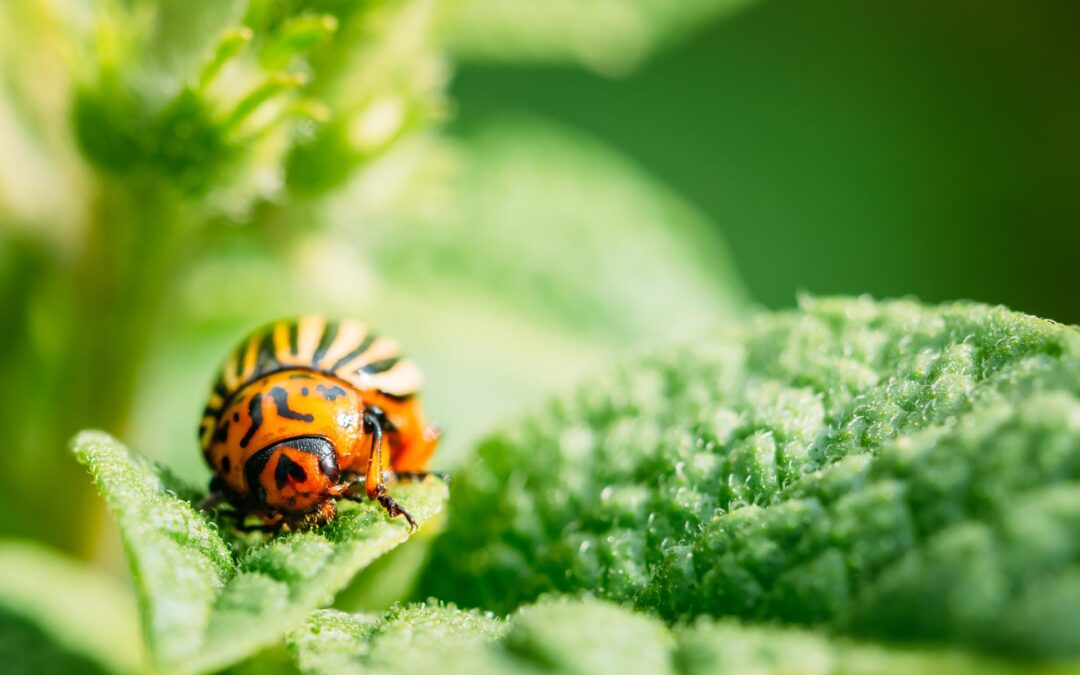Trees in Colorado stand as majestic symbols of the region’s rich ecological tapestry, offering aesthetic beauty and essential shade and habitats for various species. But, as living entities, they’re susceptible to threats. Among the most potent threats are pests, some of which can critically weaken and even prove fatal for these verdant giants. To ensure the continued flourishing of Colorado’s trees, recognize these pests, understand their signs, and know how to counteract their advances.
The Mountain Pine Beetle: Small Pest, Big Impact
The Mountain Pine Beetle, a small but formidable enemy of Colorado’s pine trees, has made headlines numerous times for the swathes of destruction it has left in its wake. Pines like the ponderosa, lodgepole, Scotch, and limber aren’t just part of the state’s natural beauty—they’re also vital ecosystems in their own right.
These beetles don’t just nibble on the bark—they delve deeper, boring into the tree to lay their eggs. As they burrow, they introduce a blue fungus to the tree—a deadly combination when combined with the feeding habits of the beetle’s larvae.
At first, the signs of a Mountain Pine Beetle infestation might be subtle. One of the earliest indicators is the appearance of pitch tubes. These look like small blobs of resin or sap and can be seen on the bark. Furthermore, pine needles take on a reddish or yellowish hue. This discoloration is a tree’s distress signal.
Prevention is better than cure, especially regarding the Mountain Pine Beetle. Ensuring that trees are well-watered and robust is one of the primary defenses against these pests. Moreover, if a tree is infested, prompt removal is essential. This step might seem drastic, but preventing the beetles from spreading to surrounding trees is vital.
Aphids: Sap-Sucking Pests
Aphids might be tiny, but they can wreak havoc on deciduous and conifer trees. Their modus operandi involves sucking the sap straight from tree leaves. As they feast, the foliage can become curled, yellowed, or distorted in shape. Over time, especially with a large infestation, trees can weaken significantly, impairing their ability to withstand Colorado’s sometimes harsh weather conditions.
It’s usually relatively easy to spot an aphid problem. These pests tend to gather in clusters, particularly on the underside of leaves. A clear residue, known as honeydew, is another giveaway. This sticky substance can, over time, lead to the growth of a sooty mold, adding another layer of problems for the affected tree.
Several methods can be employed for those looking to combat an aphid infestation. A simple but effective treatment involves using a strong jet of water to dislodge the aphids. For trees that are heavily infested, applying insecticidal soap or neem oil treatments can provide a more aggressive countermeasure.
Aspen Twiggall Fly: Distinctive Galls, Exclusive Hosts
The Aspen Twiggall Fly has a particular taste, showing a preference for aspen trees. Female flies lay their eggs on aspen’s new growth. In response, the tree develops round, wart-like galls on its twigs.
The primary sign of an infestation is the galls themselves. Initially, they appear green or reddish but take on a black hue as they mature. Although they can be an eyesore, they rarely cause significant damage to the tree.
While the aesthetic impact of these galls might be off-putting, control is relatively straightforward. The tree’s appearance is improved by pruning and removing the affected twigs, and the aphid population is also controlled.
Spruce Spider Mites: Silent Damagers
Spruce spider mites have often been misidentified as a tree disease, mainly due to the damage they inflict. These mites are minuscule, but their impact on spruce trees can be considerable. Their feeding habits result in a tree’s needles taking on a speckled or bronzed appearance.
To detect an infestation, closely inspect the underside of needles for tiny, dark-colored mites. Their presence becomes even more evident when shaking a branch over a white sheet of paper, as the mites easily stand out against the pale background.
To manage a spruce spider mite infestation, consider introducing beneficial insects like ladybugs and predatory mites. These act as natural predators, helping to reduce the mite population. Alternatively, insecticidal soaps or horticultural oils can be effective during the mites’ active seasons.
Flatheaded Appletree Borer: A Threat to Young Trees
Primarily preying on young or stressed trees, the Flatheaded Appletree Borer is another pest that Colorado residents should be wary of. The damage these borers cause isn’t just surface level; they burrow into the bark and consume the tree’s inner tissues.
Infestations can be identified by observing irregularly shaped, sunken patches on a tree’s trunk. These patches often ooze sap, signaling the tree’s distress. Moreover, trees affected by borers often show canopy dieback and other signs of stress.
Maintaining tree health is crucial in deterring the Flatheaded Appletree Borer. Ensuring trees are well-watered and healthy reduces their appeal to these pests. If an infestation does occur, applying insecticides to the tree’s trunk can be a viable treatment option. However, ensure safe and correct usage.
Here at Schulhoff Tree & Lawn Care, Inc., we believe that Colorado’s trees are not just part of the landscape but part of its identity. By understanding the threats they face and acting promptly, we can ensure their survival for future generations. If you fear that you have an infestation in your trees, contact our team for advice and assistance.

